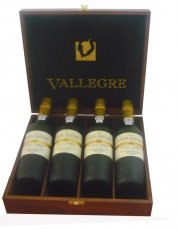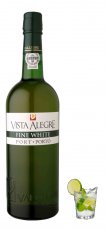Port wine
Port wine is a full-fledged, alcoholic, red and white wine from the Douro Valley, ranging from young, fruity and sweet, to intense, matured and full of flavor. Port is being made in the Douro which is in the north-east of Portugal. Port owes its name to the city of Porto (Oporto), where he has to mature according to legal obligation. This ripening must take place in Vila Nova de Gaia, a district of Porto. Only portshippers can trade from here, which makes checking of these wines easy.Port, Porto or also port wine, called, has an alcohol content between 18 and 20%.
There is sweet red, white or rosé and is served as an aperitif, a digestive or a dessert wine.
There are several types of ports, the most commonly used subdivision is ruby, vintage, tawny, white and recently there is also a rosé port called porto pink.
Usually the port can be served from the bottle in which it was bought. A ruby and a modern LBV should always be served at room temperature (not too hot because then the alcohol flavor will dominates). A tawny at room temperature or chilled like in Portugal.
White port wines, both dry and sweet, must also be chilled. The lighter and drier the wine, the lower the temperature must be.
Interesting to know: A vintage port is made of grapes from a single harvest. It is bottled 2 years after harvest and can rip on bottle for 5 to 15 years, sometimes even longer. On the label the harvest year, and the year in which the wine was bottled has to be mentioned. It is only made in the best wine years, hence he is so exceptional.
Historically is port wine traditionally passed to the left. The host first fills the guest's glass on his right hand, then his own glass and then the carafe goes round the table clockwise. Each guest donates himself and only the host may drop the carafe. There are even special carafe with a round bottom that can only be put in special containers so that the carafe is guaranteed.
Cheers !
Looking for a special year? Then enter the year you're looking for at the top banner in the "Search" field.
Display
Easy
Detailed
Photo only
List
List without photos
Sort
Name
Date
Price Ascending
Price Descending
 Vasques de Carvalho Vintage 2013 Port€ 64.00Inventory: 3
Vasques de Carvalho Vintage 2013 Port€ 64.00Inventory: 3 Burmester Quinta do Arnozelo Vintage Port 2012€ 64.00In stock
Burmester Quinta do Arnozelo Vintage Port 2012€ 64.00In stock Krohn Colheita 1998 PortSold out
Krohn Colheita 1998 PortSold out Kopke Colheita Port 2000 wooden box€ 65.00In stock
Kopke Colheita Port 2000 wooden box€ 65.00In stock Messias Port Colheita 1982Sold out
Messias Port Colheita 1982Sold out Vista Alegre Vintage 2013 Port in houten kistje€ 65.80In stock
Vista Alegre Vintage 2013 Port in houten kistje€ 65.80In stock Krohn Vintage Quinta Retiro Novo 2011€ 65.92In stock
Krohn Vintage Quinta Retiro Novo 2011€ 65.92In stock Barros Colheita 1998 Port 'Gift Box'€ 66.00In stock
Barros Colheita 1998 Port 'Gift Box'€ 66.00In stock Burmester Vintage Port 1996Sold out
Burmester Vintage Port 1996Sold out Real Companhia Velha 2003 Vintage Port in wooden box€ 66.80Inventory: 5
Real Companhia Velha 2003 Vintage Port in wooden box€ 66.80Inventory: 5 Real Companhia Velha 2007 Vintage Port in wooden box€ 66.80In stock
Real Companhia Velha 2007 Vintage Port in wooden box€ 66.80In stock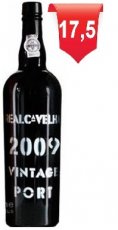 Real Companhia Velha 2009 Vintage Port in houten kistje€ 66.80Inventory: 1
Real Companhia Velha 2009 Vintage Port in houten kistje€ 66.80Inventory: 1 Real Companhia Velha 2000 Vintage Port in wooden box€ 67.00In stock
Real Companhia Velha 2000 Vintage Port in wooden box€ 67.00In stock Real Companhia Velha 2001 Vintage Port in wooden box€ 67.00In stock
Real Companhia Velha 2001 Vintage Port in wooden box€ 67.00In stock Real Vinicola Vintage 2000 Port in wooden box€ 67.00In stock
Real Vinicola Vintage 2000 Port in wooden box€ 67.00In stock Krohn Vintage Quinta Retiro Novo 2009€ 67.16In stock
Krohn Vintage Quinta Retiro Novo 2009€ 67.16In stock Krohn Colheita 1998 Port€ 67.26Inventory: 1
Krohn Colheita 1998 Port€ 67.26Inventory: 1 Real Vinicola Vintage 1998 Port in wooden box€ 67.50In stock
Real Vinicola Vintage 1998 Port in wooden box€ 67.50In stock Real Vinicola Vintage 1997 Port in wooden box€ 68.00In stock
Real Vinicola Vintage 1997 Port in wooden box€ 68.00In stock Burmester Vintage Port 1995€ 68.00Inventory: 2
Burmester Vintage Port 1995€ 68.00Inventory: 2 Real Vinicola Vintage 1995 Port in wooden box€ 68.50In stock
Real Vinicola Vintage 1995 Port in wooden box€ 68.50In stock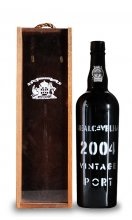 Real Companhia Velha 2004 Vintage Port in wooden box€ 69.00In stock
Real Companhia Velha 2004 Vintage Port in wooden box€ 69.00In stock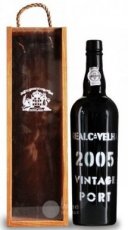 Real Companhia Velha 2005 Vintage Port in wooden box€ 70.50In stock
Real Companhia Velha 2005 Vintage Port in wooden box€ 70.50In stock Silva Reis 30 Years Old in wooden box€ 70.50In stock
Silva Reis 30 Years Old in wooden box€ 70.50In stock
How long can you keep an opened bottle of port?
The shelf life depends on the type of port. Thus, the most common port, the young (filtered bottled) Ruby remains well for 3 to 4 weeks. Immediately after opening, the taste can even progress: through the contact with oxygen the port becomes softer and fuller.
Also the (Ruby) Reserve and Late Bottled Vintaged (LBV) port remain well drinkable until one month after opening, provided that you always close the bottle with the original stop cork and keep it at a constant temperature of about 12 degrees.
The Tawny and Colheita can last for a few months. Because these wines have already been in contact with oxygen during the vessel storage, the touch of oxygen later affects less.
Only the vintage port, which is bottled unfiltered, is very durable and will best be used within a few days.



